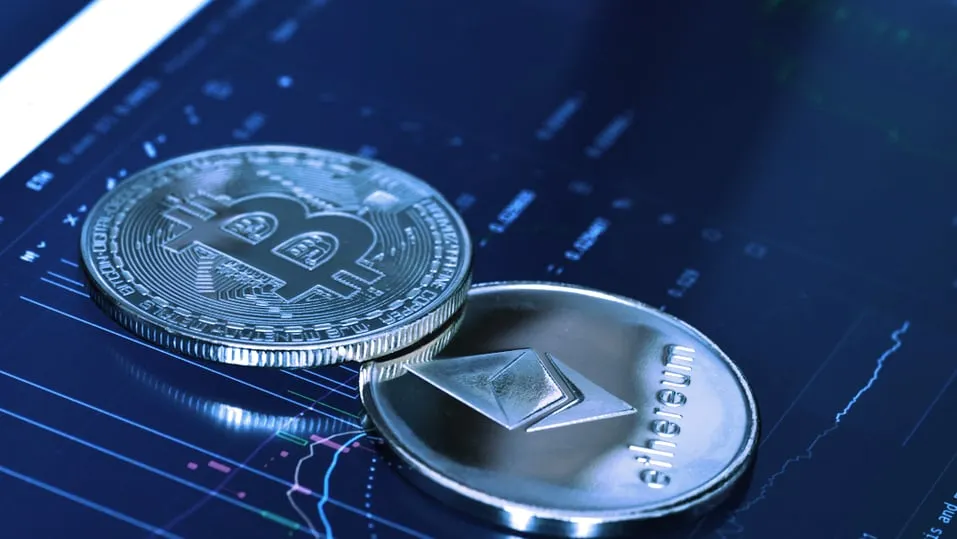Consumer prices rose more than expected in January, a potentially negative sign of what’s in store for risk assets like cryptocurrencies in 2023 as the Federal Reserve tries to tame inflation through a campaign of interest rate hikes.
The Consumer Price Index (CPI), which tracks price changes across a broad range of goods and services, rose 6.4% in the twelve months through January, the Bureau of Labor Statistics (BLS) said Tuesday, overshooting expectations of 6.2%.
“This higher-than-expected inflation report, even though it wasn't a lot higher, it adds to the potential argument of ‘higher for longer’ that the Fed has been pushing,” Head of Research at IntoTheBlock Lucas Outumuro told Decrypt.
Bitcoin and Ethereum held steady, as major stock indexes like the S&P 500 edged up premarket roughly 0.04%. Other coins, including Cardano (ADA) and Dogecoin (DOGE), both rose slightly, enjoying 1.7% and .1% gains on the day.
"Unfortunately, [digital assets] are still very highly correlated to stocks," Outumuro said. “Once there is less dependence on these data prints, the markets may begin to decorrelate again.”
Tuesday’s inflation reading added to a streak of six straight reports that showed inflation is receding from a 41-year high of 9.1% in June. Last month’s report showed prices fell 0.1% in December, bringing the annual inflation rate down to 6.5%.
But prices rose 0.5% in January across all items on a month-to-month basis. The largest monthly gains to CPI came from food, gasoline, and shelter, which accounted for nearly half of inflation in January.
The Fed has followed changes in consumer prices closely to gauge how effective its interest rate hikes have been in cooling down the economy, with the goal of bringing inflation down to its target of 2% by making it more costly to borrow. But it also weighs other factors when shaping monetary policy, such as the strength of the U.S. labor market.
Members of the Fed voted unanimously this month to raise interest rates by a quarter of a percentage point to a target range of 4.50% to 4.75%, prompting the U.S. central bank to deliver its eighth rate hike since lifting interest rates from near zero last March.
Higher interest rates have made cryptocurrencies and other risk assets like stocks less attractive when compared to more conservative assets such as U.S. Treasury Bills, which have less potential upside but are backed by the government in terms of gains.
Many investors are looking for signs that indicate the Fed could soon move from tightening the economy to keeping interest rates where they are or even stimulating growth by slashing interest rates later this year.
Even though Bitcoin and Ethereum are both up over 25% since the start of the year, stronger-than-expected jobs growth in January has muddied investors’ read on future rate hikes from the Fed, and crypto faces its own challenges amid a regulatory blitz from the Securities and Exchange Commission (SEC).
What's next for the Fed?
While Fed Chairman Jerome Powell said “the disinflationary process has started” earlier this month, he warned the central bank “will need substantially more evidence to be confident that inflation is on a sustained downward path.”
The Fed projected last December that interest rates will rest somewhere between 5.1% and 5.4% by the end of this year, leaving room for more rate hikes ahead, albeit less than the steep 75 basis-point increases the Fed delivered four times last year.
“We're now understanding what it means to live in a higher rate environment,” Head of Research at 3iQ Mark Conners told Decrypt. “It was higher than expected, it didn't move markets.”
Prior to the CPI report’s release, markets bet there’s a 57% chance interest rates will be below 5% by the end of this year, according to the CME FedWatch tool. After Tuesday’s inflation reading, that probability fell slightly to roughly 54%.
“It was mostly in line, and it probably doesn't change the Fed’s messaging that more ongoing rate increases are warranted,” Senior Market Analyst at OANDA Edward Moya told Decrypt. “We're probably going to see rates are going to be higher for longer.”
A bump in the monthly inflation rate could mean the Fed will have to stiffen its monetary stance more than originally planned. But keeping interest rates too high for too long runs the risk of tipping the economy into a recession if it restricts economic activity too much.
Core CPI, which excludes volatile food and energy prices, rose 0.4% in January after rising 0.3% in December. A majority of monthly gains to core CPI was driven by shelter, which is now 7.9% more expensive compared to a year ago. “We really need to see for CPI trend much lower,” said Moya. “Inflation is like an onion; [...] at the heart of it is core services.”
Core CPI is considered to be a better predictor of inflation trends. But economists have focused recently on an even more stripped-down measure of inflation dubbed "supercore," which looks at price changes related to services, yet excludes shelter costs and used vehicle prices.
"You're starting to see core services are showing signs of being sticky, which could complicate all the talk of just disinflation trends firmly being in place,” Moya said. “And this is what is going to be difficult to really bring down.”
January’s inflation reading was distinct compared to the month prior because of changes made to how the BLS incorporates inflation data into its report, readjusting how heavily each category is weighted to better reflect consumer spending patterns.
Typically, each category in the CPI has been reweighted every two years, but the BLS said it plans to update them annually moving forward, basing January’s inflation reading on consumer data from 2021.
For example, shelter’s weight has increased from about 33% of CPI to 34.4%. Additionally, food and energy prices will have a smaller impact on inflation readings in the future.

